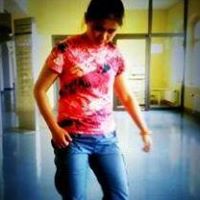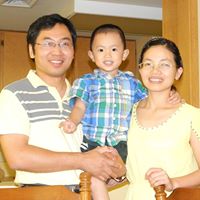Fei F Han
age ~49
from Santa Clara, CA
- Also known as:
-
- Felicia F Han
- Han Fei
- Phone and address:
- 986 Curtis Ave, Santa Clara, CA 95051
Fei Han Phones & Addresses
- 986 Curtis Ave, Santa Clara, CA 95051
- Redmond, WA
- 866 E Estates Dr, Cupertino, CA 95014 • 4082523935
- Reseda, CA
- San Jose, CA
- Booneville, AR
- Fremont, CA
- Kiona, WA
- 866 E Estates Dr, Cupertino, CA 95014
Education
-
Degree:Associate degree or higher
Resumes

Fei Han
view sourceName / Title
Company / Classification
Phones & Addresses
President
American West Flooring, Inc
Ret Floor Covering
Ret Floor Covering
10629 Rush St, El Monte, CA 91733
5922 Las Virgenes Rd, Calabasas, CA 91302
433 S Baldwin Ave, Arcadia, CA 91007
8186361825
5922 Las Virgenes Rd, Calabasas, CA 91302
433 S Baldwin Ave, Arcadia, CA 91007
8186361825
Us Patents
-
Method Of Depositing Dielectric Materials In Damascene Applications
view source -
US Patent:6890850, May 10, 2005
-
Filed:Jul 15, 2002
-
Appl. No.:10/196498
-
Inventors:Ping Xu - Fremont CA, US
Shankar Venkataraman - Santa Clara CA, US
Li-Qun Xia - Santa Clara CA, US
Fei Han - San Jose CA, US
Ellie Yieh - San Jose CA, US
Srinivas D. Nemani - San Jose CA, US
Kangsub Yim - Mountain View CA, US
Farhad K. Moghadam - Saratoga CA, US
Ashok K. Sinha - Palo Alto CA, US
Yi Zheng - San Jose CA, US -
Assignee:Applied Materials, Inc. - Santa Clara CA
-
International Classification:H01L021/4763
H01L021/31
H01L021/469 -
US Classification:438631, 438634, 438638, 438789
-
Abstract:Methods are provided for depositing an oxygen-doped dielectric layer. The oxygen-doped dielectric layer may be used for a barrier layer or a hardmask. In one aspect, a method is provided for processing a substrate including positioning the substrate in a processing chamber, introducing a processing gas comprising an oxygen-containing organosilicon compound, carbon dioxide, or combinations thereof, and an oxygen-free organosilicon compound to the processing chamber, and reacting the processing gas to deposit an oxygen-doped dielectric material on the substrate, wherein the dielectric material has an oxygen content of about 15 atomic percent or less. The oxygen-doped dielectric material may be used as a barrier layer in damascene or dual damascene applications.
-
Method Of Depositing Dielectric Materials Including Oxygen-Doped Silicon Carbide In Damascene Applications
view source -
US Patent:7151053, Dec 19, 2006
-
Filed:Apr 28, 2005
-
Appl. No.:11/118678
-
Inventors:Ping Xu - Fremont CA, US
Shankar Venkataraman - Santa Clara CA, US
Li-Qun Xia - Santa Clara CA, US
Fei Han - San Jose CA, US
Ellie Yieh - San Jose CA, US
Srinivas D. Nemani - San Jose CA, US
Kangsub Yim - Mountain View CA, US
Farhad K. Moghadam - Saratoga CA, US
Ashok K. Sinha - Palo Alto CA, US
Yi Zheng - San Jose CA, US -
Assignee:Applied Materials, Inc. - Santa Clara CA
-
International Classification:H01L 21/4763
H01L 21/31
H01L 21/469 -
US Classification:438631, 438634, 438638, 438789
-
Abstract:Methods are provided for depositing an oxygen-doped dielectric layer. The oxygen-doped dielectric layer may be used for a barrier layer or a hardmask. In one aspect, a method is provided for processing a substrate including positioning the substrate in a processing chamber, introducing a processing gas comprising an oxygen-containing organosilicon compound, carbon dioxide, or combinations thereof, and an oxygen-free organosilicon compound to the processing chamber, and reacting the processing gas to deposit an oxygen-doped dielectric material on the substrate, wherein the dielectric material has an oxygen content of about 15 atomic percent or less. The oxygen-doped dielectric material may be used as a barrier layer in damascene or dual damascene applications.
-
Hybrid Inversion Pulse For Magnetic Resonance Imaging
view source -
US Patent:20200333415, Oct 22, 2020
-
Filed:Apr 16, 2019
-
Appl. No.:16/385374
-
Inventors:- Erlangen, DE
Xiaoming Bi - Oak Park CA, US
Fei Han - Beverly Hills CA, US -
International Classification:G01R 33/56
G01R 33/563 -
Abstract:An imaging system includes determination of a first gradient-modulated offset-independent adiabaticity pulse associated with a first bandwidth and a first gradient strength, determination of a second gradient-modulated offset-independent adiabaticity pulse associated with a second bandwidth less than the first bandwidth and a second gradient strength less than the first gradient strength, determination of a third asymmetric adiabatic pulse based on the first gradient-modulated offset-independent adiabaticity pulse and the second gradient-modulated offset-independent adiabaticity pulse, and control of a radio frequency system and gradient system to apply the third asymmetric adiabatic pulse to patient tissue.
-
Cardiac Phase-Resolved Non-Breath-Hold 3-Dimensional Magnetic Resonance Angiography
view source -
US Patent:20170273578, Sep 28, 2017
-
Filed:Nov 8, 2016
-
Appl. No.:15/346036
-
Inventors:- Oakland CA, US
Peng Hu - Beverly Hills CA, US
Fei Han - Los Angeles CA, US -
Assignee:THE REGENTS OF THE UNIVERSITY OF CALIFORNIA - Oakland CA
-
International Classification:A61B 5/026
A61B 5/0402
A61B 5/113
A61K 49/18
A61M 16/00
G01R 33/56
G01R 33/563
G01R 33/567
A61B 5/00
A61M 5/00 -
Abstract:3D cine MR angiography systems and methods are disclosed for use during the steady state intravascular distribution phase of ferumoxytol. The 3D cine MRA technique enables improved delineation of cardiac anatomy in pediatric patients undergoing cardiovascular MRI.
-
Method For Accurate And Robust Cardiac Motion Self-Gating In Magnetic Resonance Imaging
view source -
US Patent:20150374237, Dec 31, 2015
-
Filed:Jan 30, 2014
-
Appl. No.:14/764972
-
Inventors:- Oakland CA, US
Fei HAN - Los Angeles CA, US
Stanislas RAPACCHI - Los Angeles CA, US -
International Classification:A61B 5/00
A61B 5/055 -
Abstract:Self-gating methods and Systems are provided for cardiac imaging analysis. In particular, non-phased coded self-gating data are collected separately from imaging data. The method uses multiple coil arrays to repeatedly acquire self-gating signals that are separate from image acquisitions. Learning-based algorithms are used in data processing to detect a triggering event, such as the onset of a heartbeat.
Isbn (Books And Publications)

Flickr
Youtube

Fei Han
view source
Fei Han
view source
Fei Han
view source
Fei Han
view source
Fei Han Wang
view source
Fei Han
view source
Fei Han
view source
Fei Han
view sourceGoogleplus

Fei Han
Work:
Schlumerger - Intern (2011)
Education:
New York Unviersity - Chemistry

Fei Han

Fei Han

Fei Han

Fei Han

Fei Han
Relationship:
Single

Fei Han

Fei Han
Get Report for Fei F Han from Santa Clara, CA, age ~49













